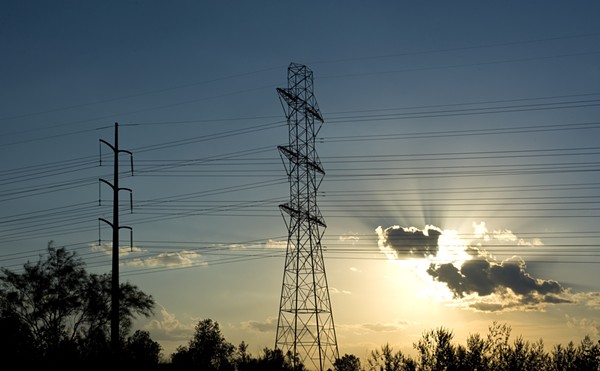Due to fortuitous timing, just two days later our City Council stepped up to the clean energy plate. "Look, look!" city council agenda item 32 cried. "We've got solar arrays, energy and water conservation studies, bikes for tourists, and energy efficiency financing. And we're even using stimulus money to do it!"
Through City Federal Economic Stimulus grants, the Office of Environmental Policy will now fund a massive solar array at the Mission Verde Center at former Cooper Middle School a hub for green learning and job training. It will also direct nearly $100,000 to studying the economic impact of water and energy efficiency projects as the City navigates through the down and out recession. For $10 million, San Antonio teams up with City of Austin for an interlocal agreement to help both cities provide financing for homeowners and local business owners looking to make energy efficient upgrades to their property.
In the short term, the most visible of these projects will be the Bike Share project. Following recent examples in health nutty cities like Denver and Minneapolis, not to mention pioneering programs in Europe, San Antonio finally took the plunge to offer 140 Trek-crafted cruisers from BCycle to residents and tourists alike at 14 proposed locations. Cost and membership programs have not yet been determined, but Denver's example provides the first half-hour free (bringing new meaning to park and ride for parking-deficient downtown events), the first hour for $1.10 and doubling in price every hour thereafter. A 24-hour membership in Denver goes for $5 and a yearly pass can be had for $65. After the stimulus money runs out, the memberships are expected to fund San Antonio's Bike Share program, with the current program angling to recruit 1,200 members in the first year, doubling the number after two years. One-time users are projected at 15,000 for year one, with a modestly increased expectation of 20,000 by year three. Office of Environmental Policy Head Laurence Doxsey told council the easy-to-ride cruisers would have baskets, and a special design with no salvageable parts and a primary color paint job to deter theft. Proposed calorie and carbon-offset counters provide riders with enough warm fuzzies to keep them pedaling.
San Antonio's proposed solar-powered rental sites largely center on downtown's major draws like the Alamo, Market Square, and La Villita, with some resident-friendly bike check-outs proposed near San Antonio College, Pearl Brewery, Sunset Station and the Medical Center. The hub for rentals, info, and repair is a sweet little house called the OK Bar smack in the middle of HemisFair Park. QueQue hopes the City remembers the perfectly-rideable West Side too, especially considering VIA's proposed Westside Multimodal Transit Center, which aims to bring buses, light rail and trolleys together, and where a Bike Share stand could easily be integrated. Thus far, the program hasn't planned stands for the Mission Trail and Brackenridge Park either, two main sites already popular with riders.
Julia Diana, who oversees sustainable transportation for the City, said the Bike Share sites are proposed, not set in stone, so the current plan could change before the slated program kick-off in early 2011. District 1 City Council rep Mary Alice Cisneros, known for picking only the most dire of battles, sided with Rollette Schreckenghost, president of the San Antonio Preservation Society, and pressed for a verbal commitment from OEP that they would work with the Preservation Society to make sure the fugly stands don't block tourists' view of our historic monuments and quaint King William. (This directed to a town that happily erected the bastion of solemnity that is Ripley's Believe It or Not! directly across from Texas' sacred Alamo.) "These stands can be rather large," said Schreckenghost, "we want to ensure they don't obstruct the view of any historic sites."
Given that august cities like Paris, Philadelphia, D.C. and London have managed to implement successful Bike Share programs without ruining tourist photo-ops forever more, QueQue doubts this will wrench the Bike Share gears too much. A few bike stands are a small price to pay for implementing another way we encourage citizens to break their fossil fuel habits.

















